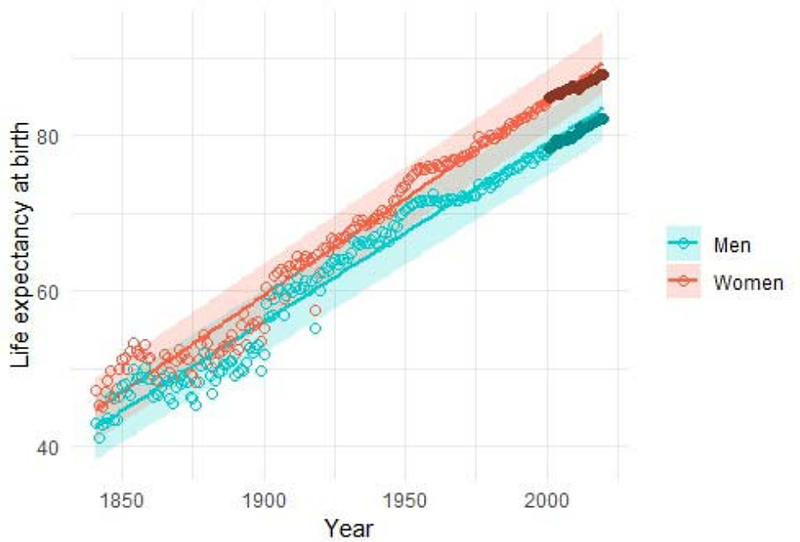Human life expectancies are still rising

Human life expectancies are still rising
Vinicius, L.; Migliano, A. B.
AbstractOlshansky and collaborators have recently proposed that the era of continuous extension of human lifespans has finally come to an end. By analysing thirty years of recent demographic data (1990-2020) from ten populations (the eight longest-lived nations, plus Hong Kong and the USA), they rejected the claims made by Oeppen and Vaupel at the start of the century (and more recently by Vaupel and collaborators) that human longevity was still far from approaching an upper limit. However, on closer examination the results by Olshansky and colleagues seem to complement rather than directly challenge the radical life extension hypothesis. The reason is that the latter was based not on country-level demographic patterns but instead on a best-practice life expectancy trend resulting from the succession of annual world-leading populations. Here we present an update based on data from the last two decades that confirms Oeppen and Vaupels original insights and demonstrates that both female and male lifespans continue to linearly increase at a global scale. This remarkably long trend observed since 1840 remains at odds with our expectation that human lifespans must at some point hit a biologically imposed ceiling.